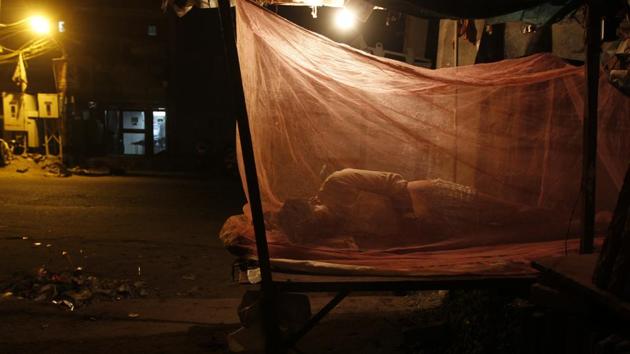Why Indian Parliamentarians are backing the fight against malaria
Let us pledge that we will eliminate malaria even from the remotest corner of India by 2030. Only when we leave no one behind will we cross the finish line
A malaria-free India. We will be celebrating this day soon. Prime Minister Narendra Modi’s government has pledged to achieve this goal by 2030, and is accelerating efforts to end the disease. The result? Thousands of malaria cases and deaths averted; millions of lives saved. Today, we are presented with a historic opportunity to finish the fight and end malaria for good. Failure will put millions of people at risk, and result in wastage of scarce financial resources that can be directed towards other pressing health needs. Malaria elimination by 2030 is an achievable goal for India, but new approaches are needed. The government cannot do it alone, and we all must play our part. As parliamentarians, we stand ready to support this goal.

Mosquitoes neither respect state boundaries, nor differentiate between political parties and ideologies. This is why 11 Members of Parliament, belonging to different states, have come together to support India’s efforts to eliminate malaria. Together, we pledge to work with all stakeholders at the central, state, and district levels to accelerate malaria elimination not just in the states we represent but across the country.
India has been lauded by the global health community for its impressive reduction in malaria cases in the last two years — 24% decline in 2017, and 28% in 2018. This is an extraordinary accomplishment, and it did not happen by chance. Successive Indian governments have contributed to this through progressive policies. The United Progressive Alliance (UPA) government launched the National Rural Health Mission (NRHM) in 2005, which helped strengthen access to quality health services for rural populations. Subsequently, during the National Democratic Alliance (NDA) government, the prime minister’s high-level commitment in 2015 was followed by the launch of the National Framework for Malaria Elimination 2016-30 and the National Strategic Plan 2017-22 for Malaria Elimination.
Political commitment, matched with new financing and health programmes targeting the most vulnerable populations, has led to the impressive results against malaria in recent years. This must continue. An important priority should be extending the National Strategic Plan to 2030 and increasing the domestic funding for malaria.
Political leadership in states must respond with equal resolve. Odisha is a good example. The state government has expanded its efforts to prevent, diagnose and treat malaria under the “DAMaN” initiative, and allocated significant state financial resources. The focus is on remote and inaccessible areas which are not well served by the public health system. It resulted in an 80% decline in malaria cases in 2018. The Odisha government must ensure that it finishes the job by developing its own malaria elimination strategy with help from partners. Similarly, Madhya Pradesh is testing a novel approach through the Malaria Elimination Demonstration Project (MEDP) in Mandla district. MEDP is an innovative public-private-partnership (PPP) between the Government of Madhya Pradesh, the Indian Council of Medical Research (ICMR), and the Foundation for Disease Elimination and Control (FDEC). The goal is to eliminate malaria from Mandla district, and use the lessons learnt during the process to eliminate the disease from rest of Madhya Pradesh and the country.
Other states should learn from Odisha and Madhya Pradesh. First, they must develop malaria control and elimination strategies that suit the local context. Second, states must be prepared to allocate own resources to implement these strategies. Finally, state governments must lead efforts to record all malaria cases. Most states have weak surveillance, and malaria cases seen in the private sector are not reported. We simply cannot eliminate the disease till we know the real disease burden. A concerted multi-stakeholder effort is needed to improve data on malaria cases and deaths, and use that to inform policy.
Alarmingly, malaria is fast retreating to hard-to-reach areas such as the tribal belts, forests, mountainous regions, and border districts. Some experts believe that these will be the last frontiers for malaria elimination in India. Malaria thrives in places with weak health systems, where access to diagnosis and treatment is often limited. This is why tribal populations account for 30% of cases, and 50% of malaria deaths in India.
This is not to ignore the threat of urban malaria. While it has become predominantly a rural disease in most countries, India is an exception. It remains a potent threat in cities such as Mumbai and Chennai. The chief culprits include water storage containers, gutters, and construction sites. Against this backdrop, there is an urgent need to identify and implement innovative strategies and interventions designed to tackle malaria among hard-to-reach populations as well as urban pockets.
India almost eliminated malaria during the 1960s. However, we let complacency get the better of us. Had India succeeded, it would have averted millions of malaria cases and thousands of deaths. It is clearly one of the biggest lost opportunities in independent India’s public health history.
We cannot simply continue with a “business as usual” approach. India still has the largest malaria burden in Asia. This is unacceptable and also incongruous with our aspirations as a nation. We must challenge ourselves with ambitious targets and make bold commitments to meet them. Let us pledge that we will eliminate malaria even from the remotest corner of India by 2030. Only when we leave no one behind will we cross the finish line.
KJ Alphons is a BJP leader and Member of Parliament, Rajya Sabha, and Gaurav Gogoi is a Congress leader and Member of Parliament, Lok Sabha
The views expressed are personal






